Shocking Pancevo massacre: 36 innocents killed over 1 drunk German, their families made to watch
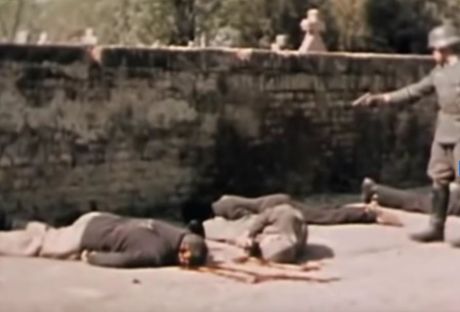
Most people in Serbia were preoccupied yesterday with the 75th anniversary of the liberation of the WW2 Jasenovac concentration camp (in Croatia), where several hundred thousand Serbs, Jews and Roma were killed and tortured in horrific ways.
The amount of viciousness demonstrated in that camp were children were burned in furnaces, is upheld by the opinion of several historians who believe that Jasenovac was even more brutal than Auschwitz. However, away from public's attention, two days ago was the 79th anniversary of a horrific crime in Pancevo, a town northeast of Belgrade, when 36 people were executed.
The atrocity was preceded by a cover-up
According to some historians, the cause of this mindless crime was the death of a German soldier killed by another, drunk Wehrmacht member, as they were celebrating Adolf Hitler's birthday in Pancevo, on April 20, 1941. To cover up this crime, an attack was staged on a German patrol near the Old Orthodox Cemetery in Pancevo.
Ethnic Germans from Pancevo faked the attack on members of the German army from this Serb cemetery, wanting to portray this to the military authorities as an attack carried out by the Serbs, thus triggering a reaction by German occupiers against them. The German military responded with machine-gun and rifle fire, and those who fired from the cemetery, namely the Volksdeutschers (local Germans) - members of the Kulturbund - immediately left the scene. The following day, posters were put up around the town, issued by order of the commander of the settlement of Bandelovo, stating that for each German soldier killed, 10 Serbs would be hanged.
One of the motives for the crime was also the execution of nine local Germans from Pancevo by the Army of the Kingdom of Yugoslavia on the eve of the arrival of German occupation troops to this town, during the withdrawal of the Yugoslav army. Those executed were organized members of a fifth column who had tried to disarm a group of Yugoslav soldiers retreating toward Belgrade.
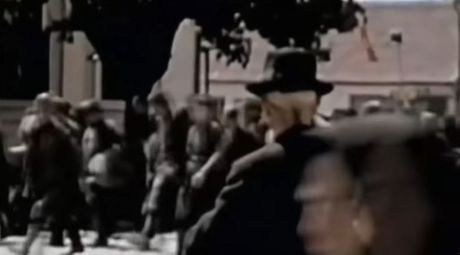
The crime against 36 Pancevo residents was initiated by local Nazis, most notably Jakob Avender, one of the leaders of the Nazi movement among Germans from (Serbian province) Vojvodina. During his active political work that started in the mid-1930s, Pancevo became the most significant stronghold of the Nazi movement among Yugoslav Germans.
In this town, Nazified Volksdeutscher youth organized into the so-called "Revivalists" who took over the management of Kulturbund at the end of 1938. The local Nazis were publishing their newsletter in Pancevo and had a bookstore.
A "trial" that lasted two hours
About 100 people were arrested on April 21 and taken to a military court. There was no trial in the true sense of the word, there is no record from the hearings, and the defendants were not given the opportunity to present their defense. Moreover, no formal verdicts were issued at this "trial" - instead the chairperson orally communicated the verdict to the victims.
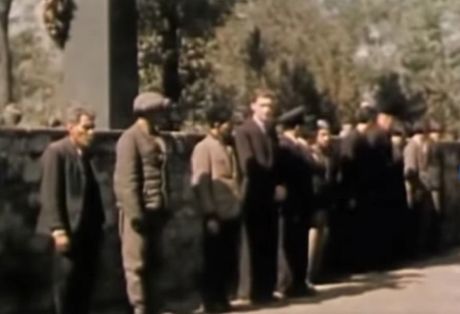
"Rope for you, bullet for you," he said.
The entire trial was conducted within two hours: 36 people were sentenced to death and four were released.
Execution of innocent Pancevo residents
Four people were shot dead on the same day, April 21. The next day, April 22, 18 people were hanged and 14 others were shot dead. The hanging was first carried out at the Old Orthodox Cemetery. The families of the victims were forced to come to the cemetery and watch the executions. In addition, a large number of local Germans watched the hangings and shootings, as seen in the video. which also showed local German civilians, some wearing Nazi insignia, taking closer looks at the corpses of victims.
The hangings were carried out by a local German tinsmith Herman Brum - who would die in Bosnia in 1943 fighting against Partisans as a member of the 7th SS Division "Prince Eugen". The executions carried out by firing squad were done by members of the Wehrmacht.
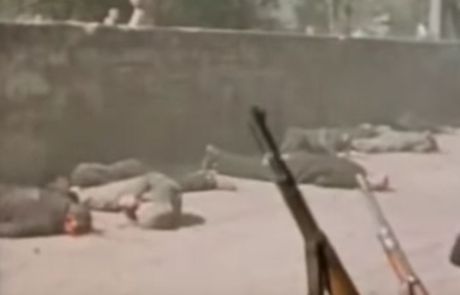
The victims who were hanged were: Milanovic Milan, Milivojevic Milutin, Cadik Jakov, Koces Franja, Caran Milorad, Azicki Pera, Mirjic Djordje, Zestic Vladimir, Maksin Jovan, Topolovacki Aleksandar, Skovran Mirko, Ristic Ljubomir, Jeftic Milenko, Adamovic Jovan, Stojkov Dusan, Radak Kosta, Taja Cosic, Darinka Siskulovic (all from Pancevo, except Milivojevic, who was from Omoljica near Pancevo).
The victims shot to death were: Tihomir Humanovic, Ivan Grobanovic, Gojko Tesanovic, Sava Pantelic, Dusan Hadzic, Grujuc Djura, Haker Sandor, Markov Toma, Steva Peric, Crni Djura, Novak Marijan, Dragutin Milenkovic, Tihomir Nedovic, Tragomir Atanackovic, Radivoj Atanackovic, Avramov Vasa, Pinter Stevan (all from Pancevo).
All the victims, both those hanged and those shot dead, were left at the execution site for 24 hours, after which they were buried by their families. Four victims had been shot and killed the day before.
"Murders carried out with pleasure"
Gerhard Gronefeld, a German military photographer, captured the execution of the Serbs.
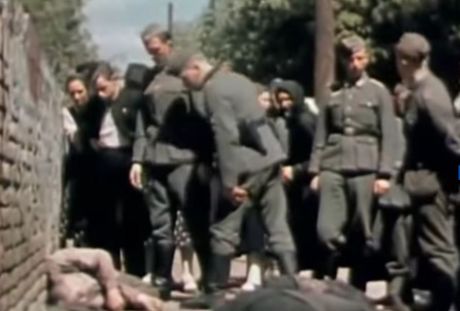
The hangings were voluntarily done by a Volksdeutscher, a butcher's assistant, who "carried out this horrific job with great brutality and obvious pleasure," as Gronefeld wrote.
Take a look at the video that has been seen around the world as one of the rarest and cruelest depictions of German crimes:
To never be forgotten and repeated
Telegraf.rs reporters traveled to Pancevo last year, following a horrific story about a former prison hidden in a museum's catacombs. The walls, which represent a diary of the suffering of Pancevo citizens at the hands of the Nazis, are in the catacombs of the National Museum in this town, and represent a reminder of the horrific crimes that have taken place here.
As soon as you step into the basement of the museum where the prison used to be, you have the feeling that you have stepped into the past. The doors of the cells, still exuding horror, were opened to us by the museum's senior curator, historian Srdjan Bozovic.
Take a look at our powerful report, which you won't find on any other TV station or website:
Video: My name was Johan Fiser... I was a prisoner of the infamous Gestapo prison in Pancevo
(Telegraf.rs)
Video: Oskrnavljen spomenik jevrejskim žrtvama: Ovako danas izlgeda mesto gde su brutalno ubijani
Telegraf.rs zadržava sva prava nad sadržajem. Za preuzimanje sadržaja pogledajte uputstva na stranici Uslovi korišćenja.

